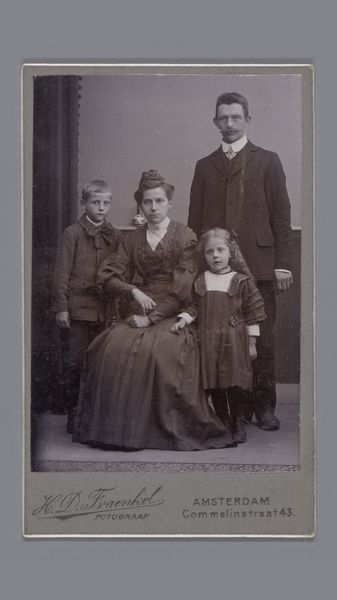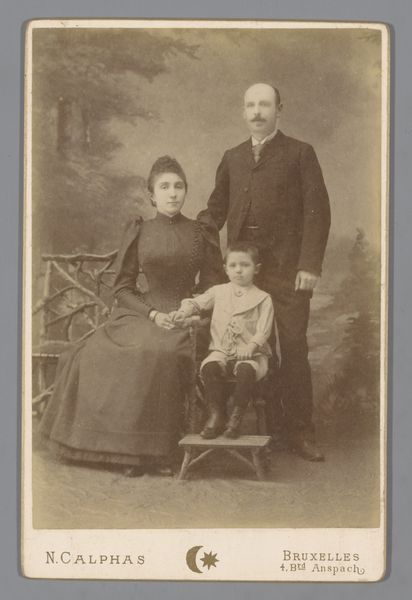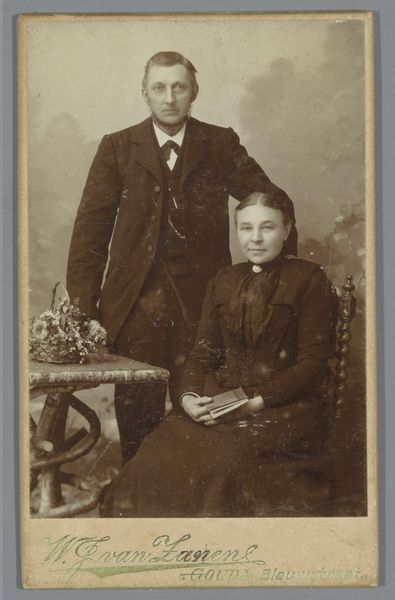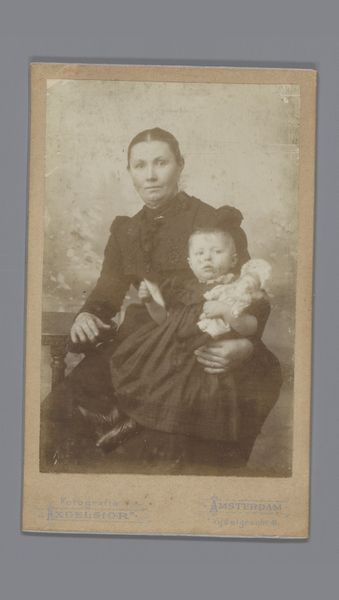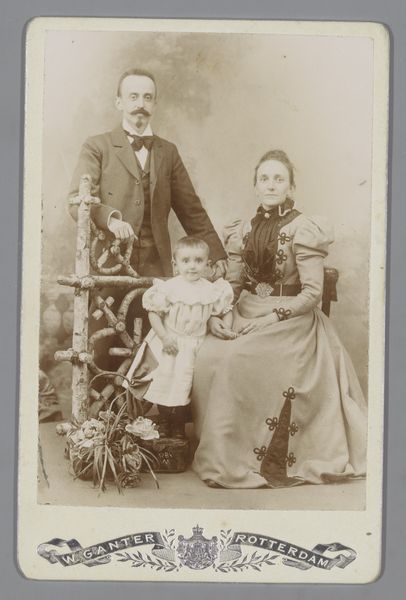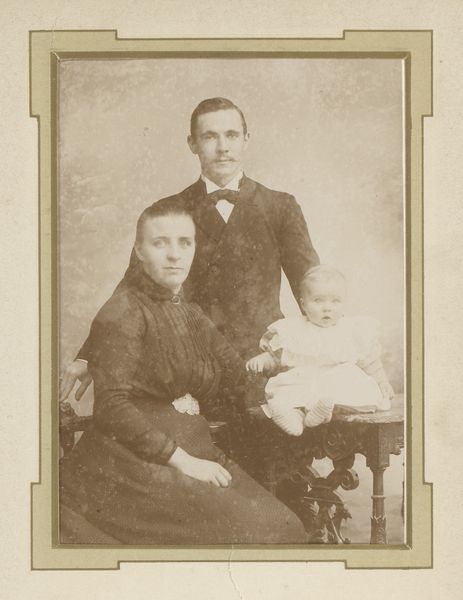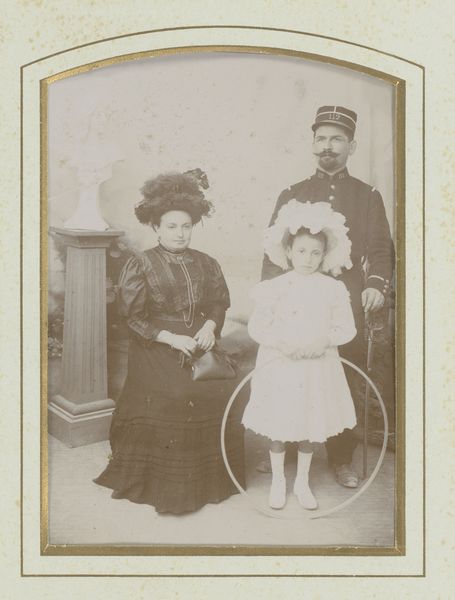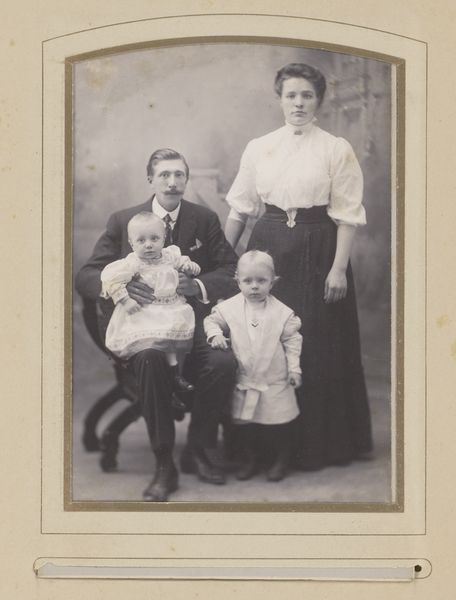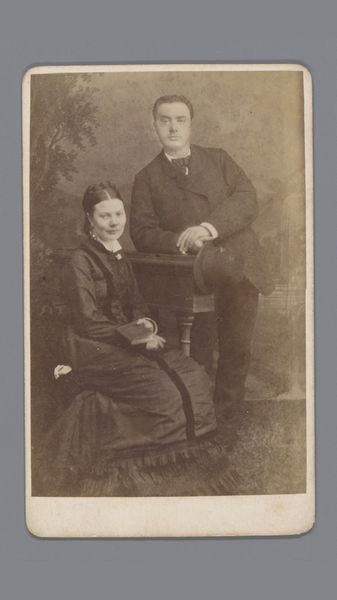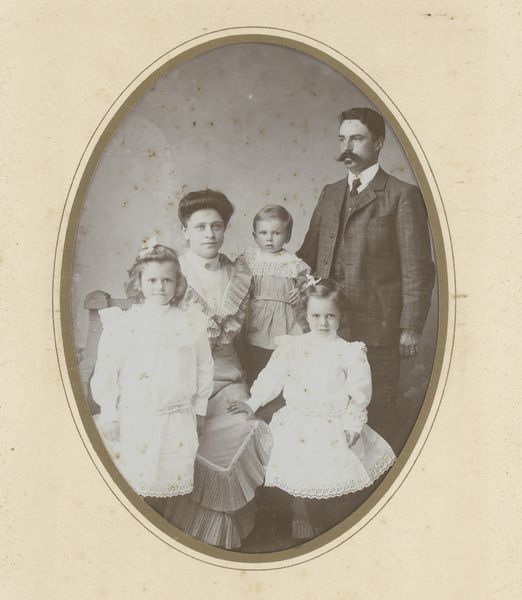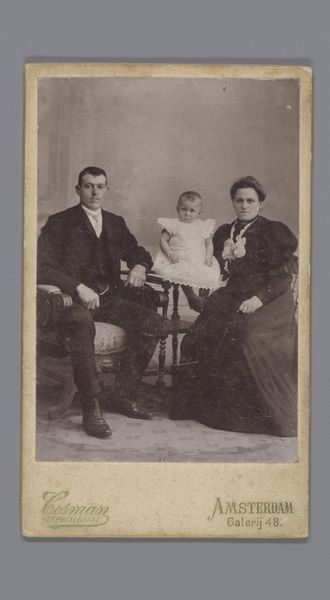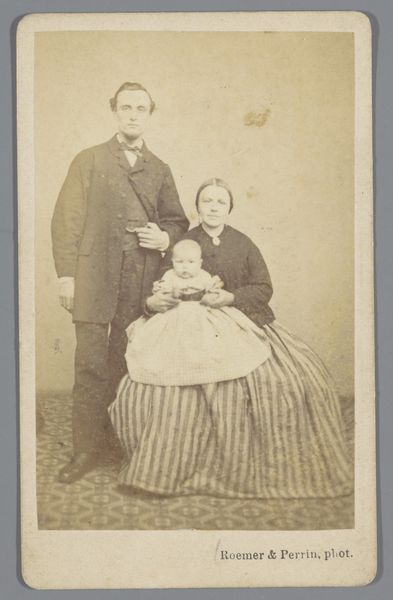
photography, gelatin-silver-print
#
portrait
#
photography
#
gelatin-silver-print
#
genre-painting
Dimensions: height 104 mm, width 64 mm
Copyright: Rijks Museum: Open Domain
Curator: Here we have a gelatin silver print from somewhere between 1881 and 1903. It's titled "Groepsportret van een onbekende man, vrouw en kind," meaning "Group portrait of an unknown man, woman, and child," held here at the Rijksmuseum. Editor: It's striking how formal and serious everyone appears. There's a starkness to the photograph, and the limited tonal range almost makes it feel austere, particularly the woman’s dark clothing. It reads to me like it was important for this family to represent their public image with that degree of solemnity. Curator: Indeed, this era of studio photography often served specific purposes for families navigating shifting social landscapes. As photography became more accessible, it became a means to demonstrate middle-class aspirations and societal positioning. This family carefully chose how they wanted to be seen. Editor: You see that demonstrated by the stiff poses and that sort of affected seriousness. Were there many conventions dictating how you could and could not represent yourself? This image seems to show the power dynamics in the image, in which the parents dominate the composition around a central yet infant body. Is that an intended or unintended power dynamic at play here? Curator: Definitely. The construction of Victorian ideals heavily influenced photographic portraiture. The family is positioned very carefully. Notice how the father is standing, lending an air of authority and support, while the seated mother holds the child, presenting this image of domesticity and continuation. The infant seems central yet contained by its parents. The father's height really frames the whole composition of bodies in the portrait. Editor: You are right to notice the height difference! There is something unsettling about seeing the family structured and placed in a picture. It suggests more than just a picture, but that a narrative is being built. The construction of family roles, perhaps? Were these the same expectations and pressures, regarding visual performance, exerted across society for the working class as for middle-class families like these? Curator: Certainly, though the modes of performance would differ. While middle-class families might emulate the aesthetics of the aristocracy, the working class may have used photographs to signal their adherence to moral codes and their work ethic. However, the desire to express dignity was, perhaps, a unifying factor across class lines. Editor: What an insightful point, given the constraints placed upon many families living under similar capitalist systems! Well, this picture certainly prompted me to question how easily accessible are people's attempts to make visual representation, as well as question whether representation necessarily means visibility. Curator: It's photographs like these that challenge us to examine the layers of social meaning woven into seemingly straightforward images. The unnamed family offers a powerful case study in the visualization of identity.
Comments
No comments
Be the first to comment and join the conversation on the ultimate creative platform.
